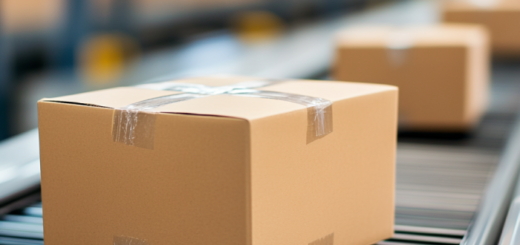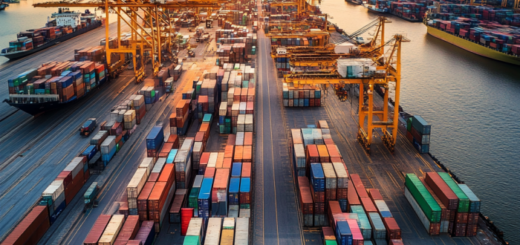Sustainable logistics in action: reducing environmental impact without sacrificing reliability or cost
Transportation generates the largest logistics carbon footprint. Reducing this demands strategic modal shifts without slowing delivery. Green Transport Optimization replaces rigid truck-only routes with dynamic intermodal solutions. High-volume lanes utilize electric or bio-LNG trucks where infrastructure permits. Rail transports goods 75% farther per carbon unit than road haulage – integrating rail for the middle mile slashes emissions. For last-mile urban delivery, micro-hubs deploy electric cargo bikes and light EVs, cutting congestion and tailpipe pollution. Advanced telematics continuously reroute fleets around traffic, minimizing idle time and fuel waste while meeting tight delivery windows. Collaboration through shared truckloads or multi-vendor consolidation centers maximizes vehicle utilization, turning competitors into climate allies.
Warehouse Transformation: Efficiency as Ecology
Warehouses are energy-intensive nodes. Global modern facilities leverage automation and design for sustainability. Solar panels on rooftops generate clean power, feeding operations and excess back to the grid. Smart LED lighting with motion sensors cuts electricity use by 70%. AI-driven warehouse management systems optimize storage density and pick paths, reducing forklift travel and energy consumption. Rainwater harvesting systems supply non-potable water for sanitation and cooling. Temperature control shifts from energy-hungry HVAC to passive solutions like high-volume low-speed (HVLS) fans and strategic insulation. Location strategy matters: placing distribution centers near urban centers or rail terminals reduces inbound and outbound transport miles. These upgrades lower operating costs while shrinking carbon footprints.
Packaging Revolution: Circular Systems & Waste Elimination
Excessive and non-recyclable packaging creates enormous waste. Sustainable logistics demands circular packaging strategies. Right-sizing boxes through 3D scanning eliminates filler materials and wasted cargo space. Switching to mono-material plastics enables full recyclability, unlike complex laminates. Plant-based compostable foams replace petroleum-based cushioning. Reusable container systems – from pallets to consumer totes – gain traction; pooling services manage tracking, cleaning, and redistribution. Blockchain technology verifies packaging lifecycles, ensuring items return for refurbishment. For e-commerce, water-activated paper tape replaces plastic shipping labels, while dissolvable packing peanuts prevent landfill clutter. Each innovation reduces waste without compromising product protection.
Data & Technology: The Digital Green Enabler
Precision sustainability requires granular data. IoT sensors monitor real-time emissions across fleets, warehouses, and cold chains. AI platforms analyze this data to identify inefficiencies: pinpointing idling trucks, energy leaks in facilities, or suboptimal routes. Digital twins simulate network changes, predicting environmental impact before implementation. Carbon accounting software automates emissions reporting against standards like GHG Protocol, turning compliance into strategy. Cloud-based TMS (Transportation Management Systems) optimize loads and routes dynamically, considering traffic, weather, and carbon intensity. Blockchain creates transparent green supply chains, verifying ethical sourcing and low-carbon credentials for conscious consumers. Technology transforms guesswork into measurable action.
Partner Collaboration: Scaling Impact Collectively
No company achieves sustainability alone. Logistics providers must align vendors and customers on green standards. Mandate carriers utilize low-emission vehicles via procurement policies. Share consolidated loads with non-competing partners to fill trucks. Co-invest with suppliers in returnable packaging infrastructure. Require ISO 14001 certification from 3PLs as a baseline. Jointly fund renewable energy projects at shared hubs. Transparently share emissions data across the chain to identify collective reduction hotspots. Industry coalitions like the Smart Freight Centre develop standardized tools, amplifying individual efforts. Collaborative action distributes costs and accelerates sector-wide transformation.
Cost Neutrality & Long-Term Value Creation
Sustainability must demonstrate financial viability. Electric fleets offer lower lifetime costs despite higher upfront investment – reduced fuel and maintenance expenses deliver ROI within 3-5 years. Energy-efficient warehouses slash utility bills. Optimized packaging cuts material and shipping costs. Carbon tax avoidance and ESG-linked financing with lower interest rates provide direct savings. Brand value enhancement attracts eco-conscious customers and talent, boosting sales and retention. Investing in resilience against climate-driven disruptions (floods, fires) mitigates future revenue loss. Viewing sustainability through a total-cost-of-ownership lens reveals its role as a competitive advantage, not a charitable expense.
Q&A
For regional hauls under 250 miles, yes. Long-haul requires strategic charging infrastructure and interim solutions like bio-LNG trucks or rail intermodal where range is insufficient.
Blockchain-tracked containers with embedded RFID tags ensure visibility. Leasing models with deposits incentivize returns, while pooling spreads costs across users.
Retrofits deliver 80% of benefits: add solar panels, upgrade to LED lighting, install HVLS fans, and implement AI-driven warehouse management systems for efficiency gains.
Collaborate through logistics alliances for shared resources (e.g., consolidated shipments, pooled warehouses). Leverage government grants for EV fleets or solar installations.
Demand third-party verification (e.g., Smart Freight Centre’s GLEC framework) and use carbon accounting software adhering to global standards like ISO 14064.



